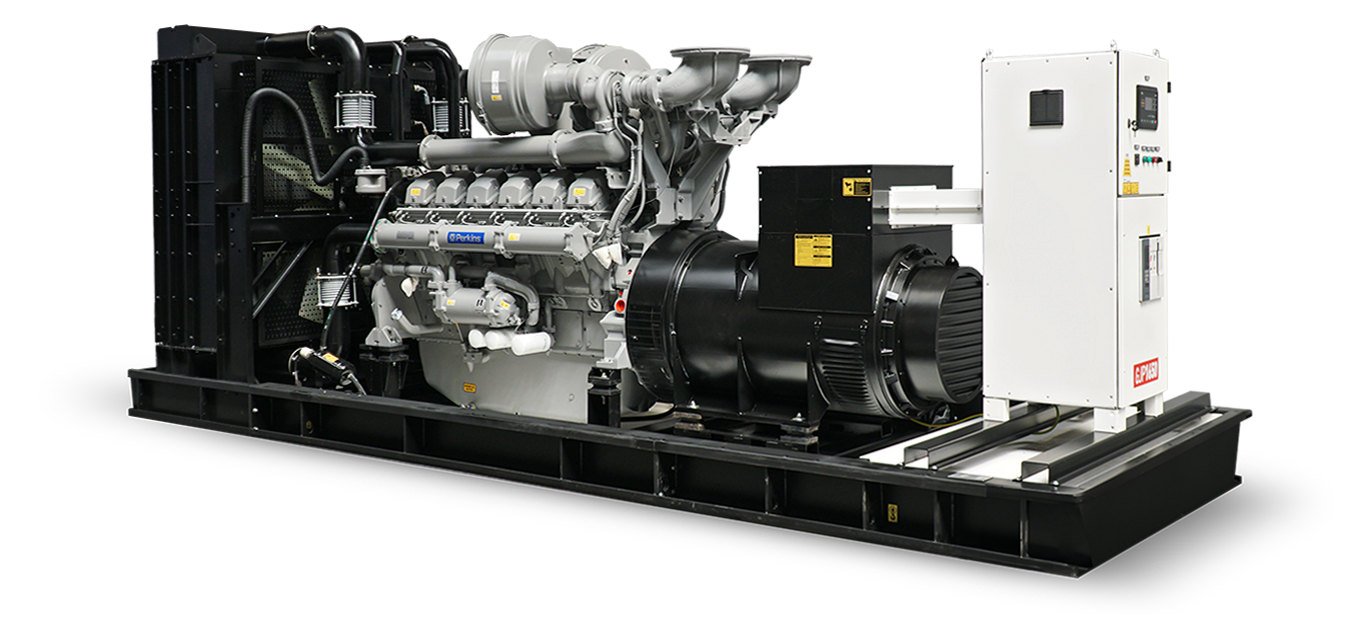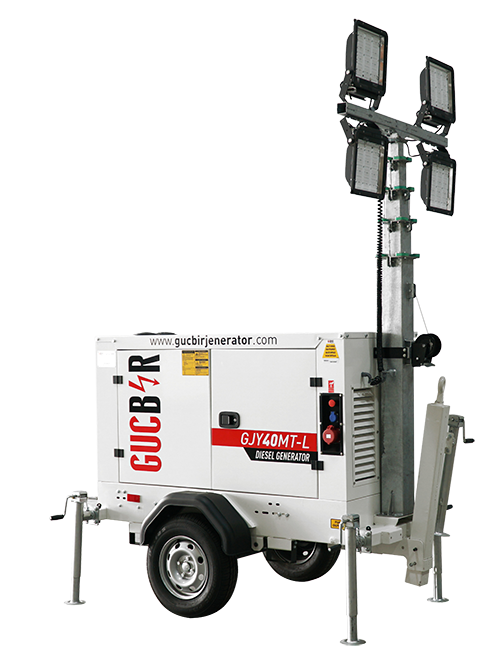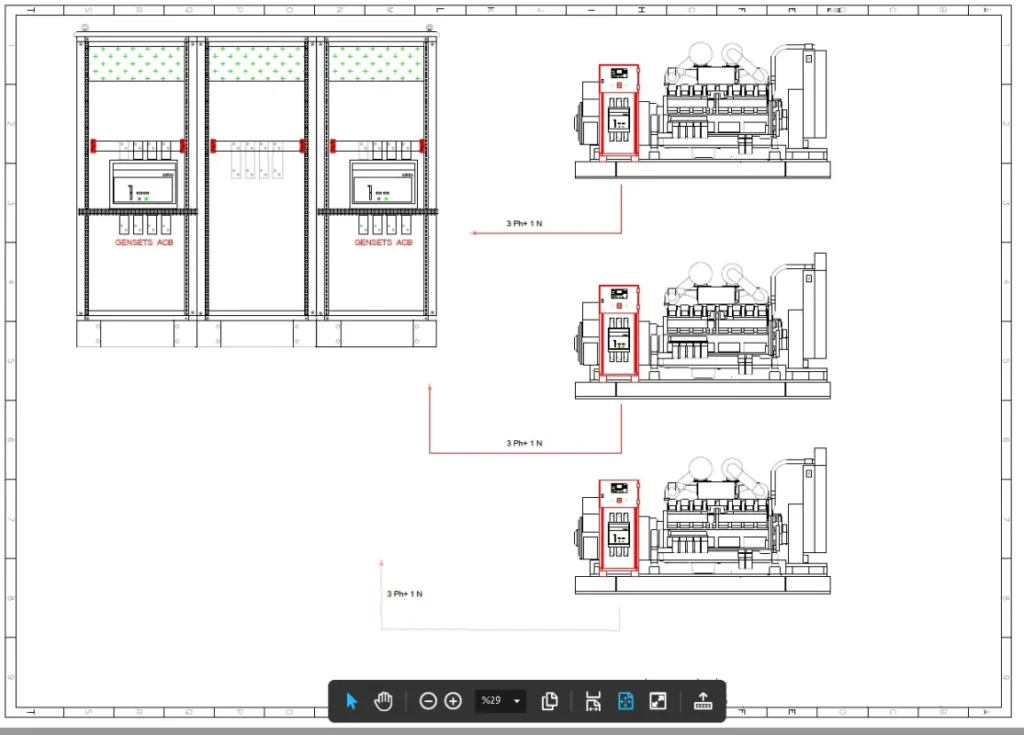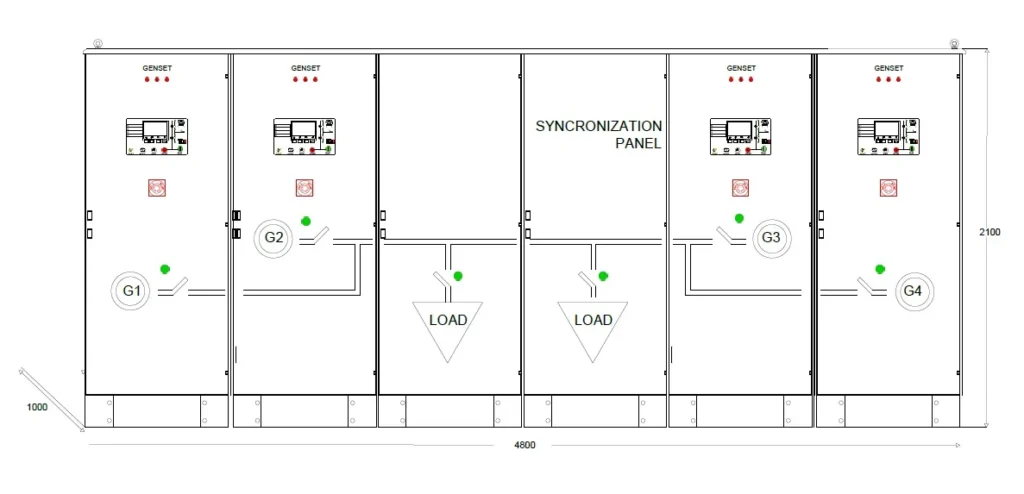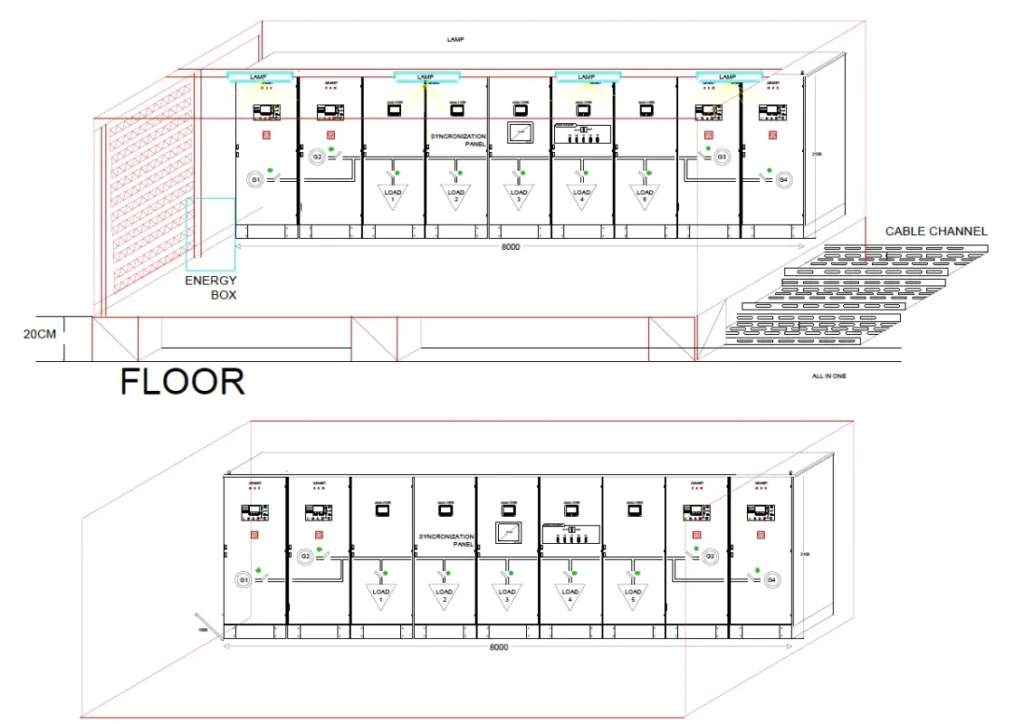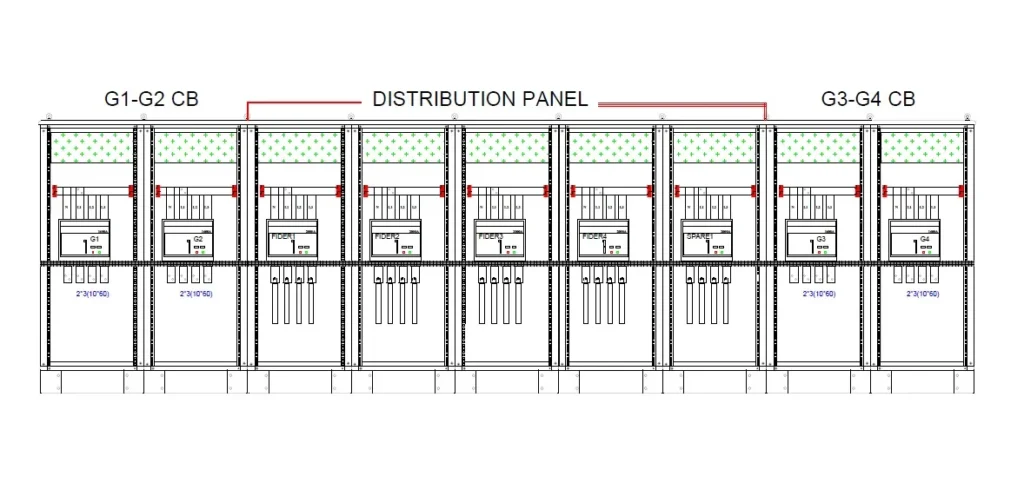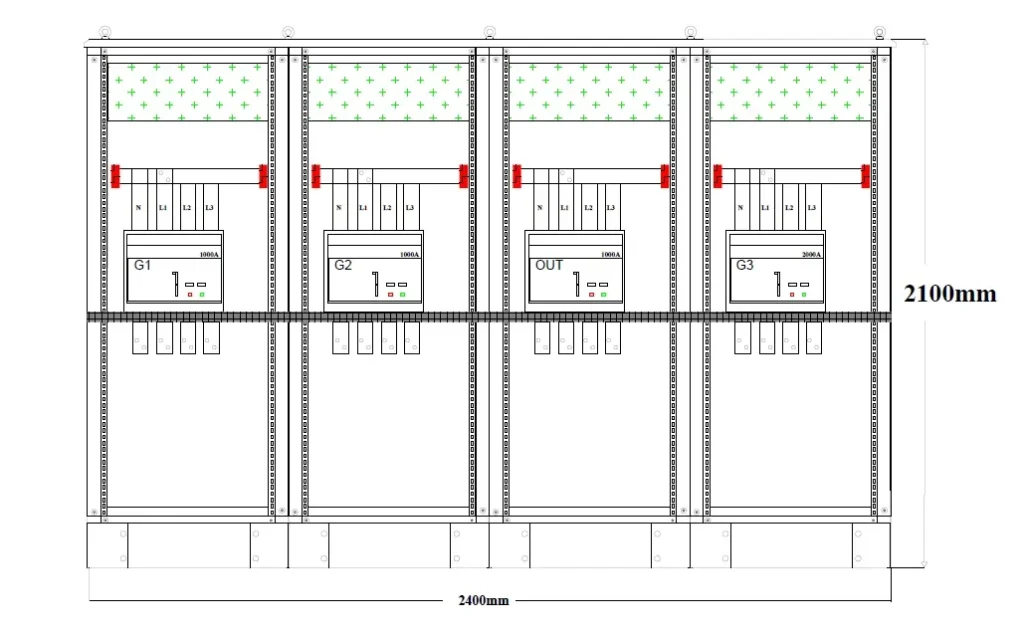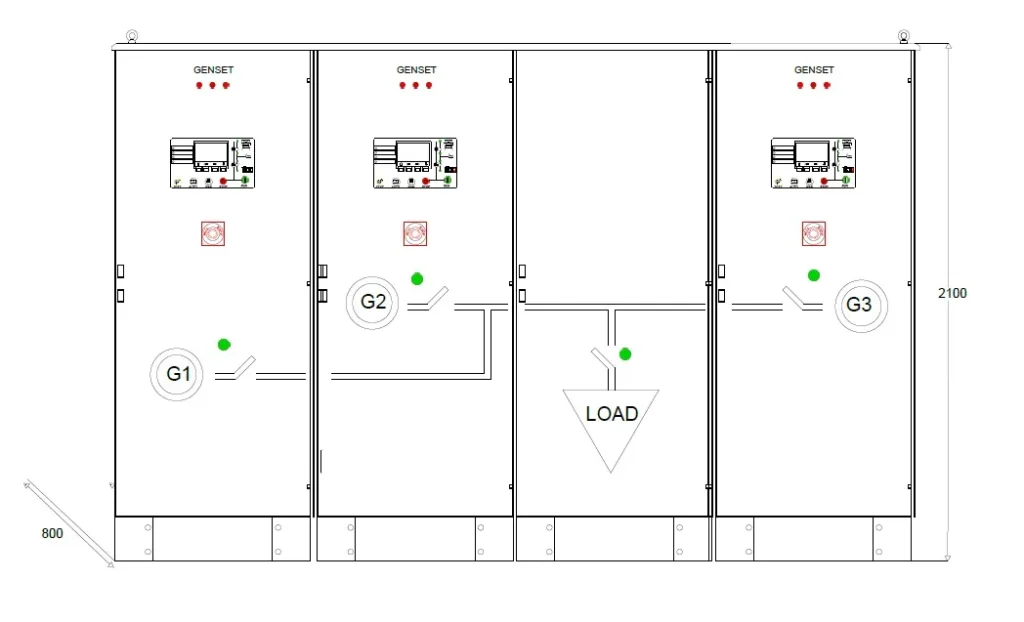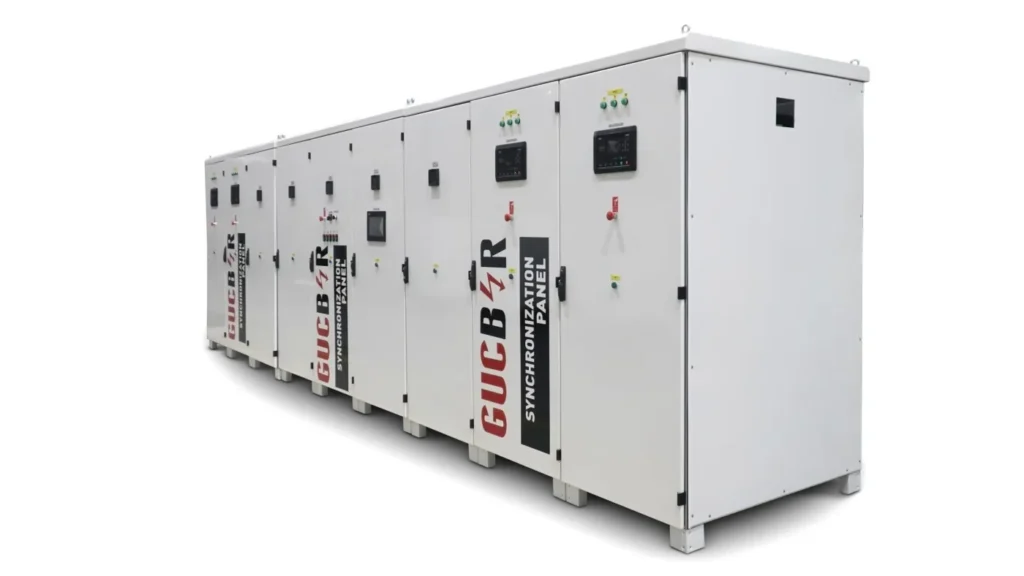
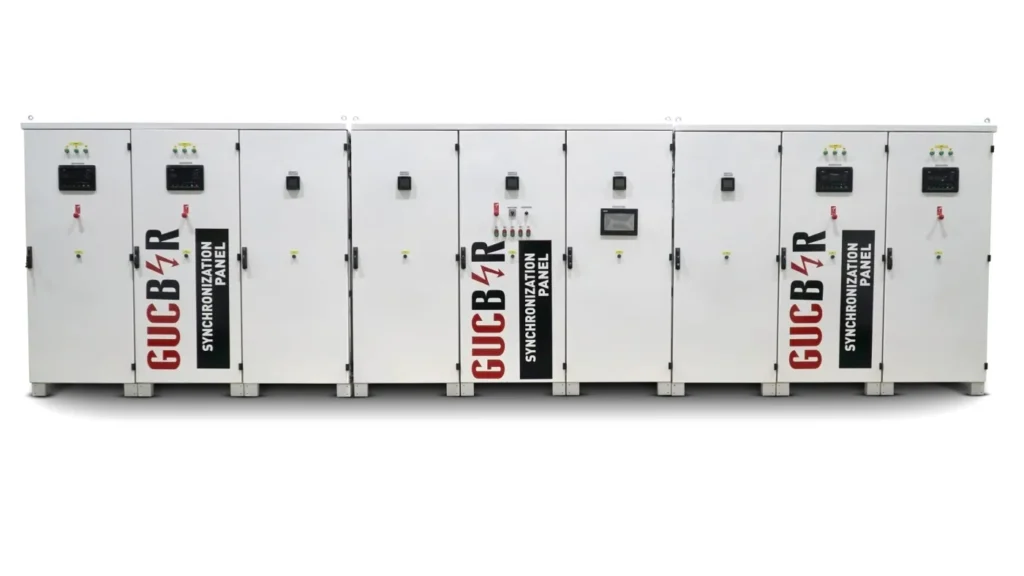
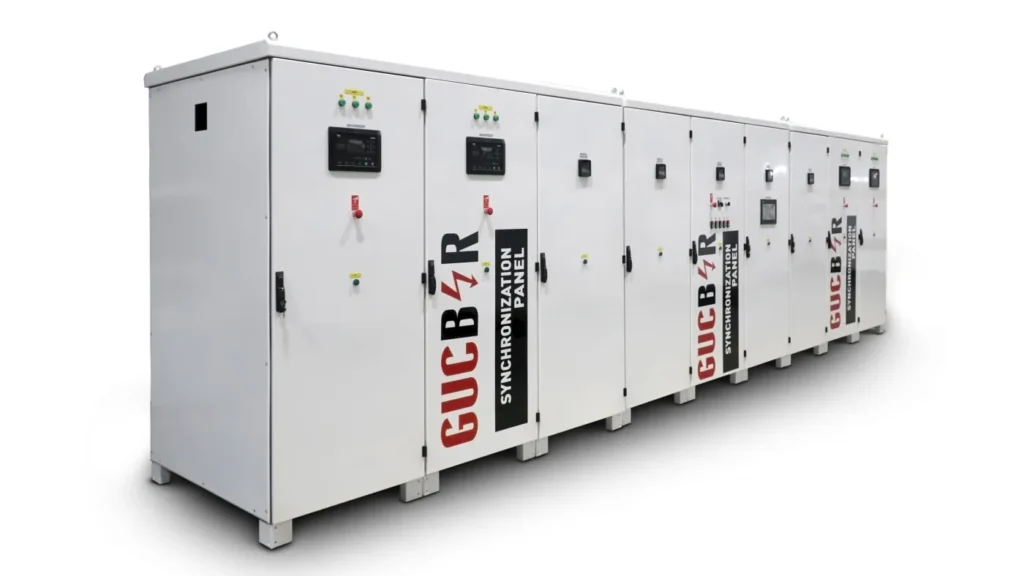
Synchronization Solutions
Island Mode Generator Synchronization
The synchronization system between generators is called an ADA mode system. It’s so named because there are receivers around the generator common busbar. In this case, the generator common busbar acts like an energy island with receivers around it.
Systems built to these standards do not concern themselves with grid energy information. They physically await a start command from the system on the Transfer Panel.
The generators in the system power the field by starting all at once or by prioritizing their starting values based on site requirements. The generators’ starting and stopping functions are determined by load analysis.
The operating priorities of the generator to be used in this system are determined physically by the user and also according to the generator operating hours.
From the moment the start signal arrives, the Master generator, the generator with the highest operating priority, starts operating. After reaching the nominal voltage and frequency, it closes its circuit breaker on the common busbar. The other generators monitor the Master generator’s parameters via the communication line. When the necessary conditions are met, they close their own circuit breaker, completing the synchronization process. Once synchronization is complete, the field is supplied via the generators via the Transfer Panel. From this point on, Reactive and Active load sharing begins between the generators, depending on system requirements.
Grid Controlled Generator Synchronization
Uninterrupted Soft Transition System
The grid’s voltage and frequency are checked. When the grid power is depleted or outside limits, the control unit deems the grid power inactive. The grid circuit breaker is opened. A start signal is sent to the generators via the communication network.
Once the generators are synchronized to the common busbar, the generator common circuit breaker is closed by the control unit. The system is powered by the generators. When mains power is restored and within the desired limits, the generators attempt to synchronize with the grid. When synchronization is achieved, the mains circuit breaker and generator circuit breakers are closed simultaneously, and the load is gradually transferred to the grid via the generators. The generators enter the cooling period.
Short Interrupted Transition System
The grid’s voltage and frequency are checked. When the grid power is depleted or outside limits, the control unit deems the grid power inactive. The grid circuit breaker is opened. A start signal is sent to the generators via the communication network.
Once the generators are synchronized to the common busbar, the generator common circuit breaker is closed by the control unit. The system is powered by the generators. When mains power is restored and within the desired limits, the control unit first opens the generator circuit breaker and then closes the mains circuit breaker. The load is transferred to the grid via the generators. The generators enter the cooling period.
In AC diesel generator systems, the alternator output frequency is adjusted by controlling the fuel control system, and the alternator output voltage is adjusted by controlling the voltage control system. These controls are controlled by a closed-loop control system. This control system analyzes the diesel generator’s response to the synchronization process and selects the appropriate parameters. These parameters are crucial for system reliability at the beginning, during, and after the synchronization process.
In AC generator systems, the reference point for synchronization is always the energy point of the other system. Generators perform synchronization by adjusting their electrical parameters based on the reference point.
These points vary depending on the configuration of the system.
A- Synchronization process between generators
The reference point in this system is the Generator Common Busbar. The energy in this busbar is analyzed and the Generator Synchronization Control Unit sets the parameter values.
B- Synchronization Process Between Generator and Grid
In such systems, the reference point is the common busbar for both the grid and the generator. This point will vary due to the forward-backward synchronization required by the system.
Maintenance and Repair Costs: Choosing multiple generators instead of a single generator to meet the installed capacity will extend maintenance usage time. Furthermore, the maintenance cost/time ratio will decrease, resulting in lower maintenance costs.
System Redundancy and Reliability: In multiple generator applications, if one generator in the system fails or during periodic maintenance, the other generator(s) will be available. The generators will operate as backup generators for each other.
Functional areas may include more than one network, coupling switches that can be added to the load/generator/network sides, MV synchronization with step-up transformers, fuel automation systems, and 7-10 stage load shedding and taking operations.
In functional areas, all equipment within the system is integrated by the GÜÇBİR GENERATOR Engineering team.
The entire system can be integrated with a SCADA/HMI Operator Panel/PLC-supported automation system, depending on field requirements. This increases field reliability, monitoring, and control capacity.
What is Even Aging?
Synchronization attempts to synchronize the operating hours of the generators. The Master Generator is the generator that will operate from the moment the mains power is out on site. Once the generators are synchronized, the field is powered, and load analysis begins. Based on this analysis, the number of generators required to meet the field load continues to power the field. The remaining generators are shut down after the cool-down period. The Master Generator is the generator with the fewest operating hours among the generators in the system. The generator with the most operating hours begins the cool-down period first.
This operation is called EQUAL AGING application.
What is a News Outage?
This can be done if the timing of the grid power outage is known. This can be done in two ways.
The timeframe can be determined. If the grid is known to be down, the generators will take the load from the grid before the grid is cut. If the grid is back on at the specified time, the generators will hand the load over to the grid; if not, the field will continue to be supplied by the generator.
This can also be done physically. The user can use a switch on the GÜÇBİR Synchronization Panel or a button on the SCADA/OPERATOR PANEL to transfer generators to the field via uninterrupted transfer from the grid. When the switch or relevant input is inactive, the field is transferred to the grid via uninterrupted transfer.
What is Load Sharing?
In multiple generator synchronization applications, generators share the field load in proportion to their power. This sharing occurs through active and reactive mechanisms.
WHAT IS SYNCHRONIZATION?
Synchronization systems literally mean matching or equalization. In AC electrical systems, certain conditions exist for these synchronizations to occur.
01.
VOLTAGE RMS value of the phase to be matched
02.
FREQUENCY value of the phase to be matched
03.
WAVEFORMS of the phases to be matched
04.
For 3-phase systems, the order of the phases to be matched
05.
For 3 phase systems, PHASE ANGLE DIFFERENCE between each phase to be matched



